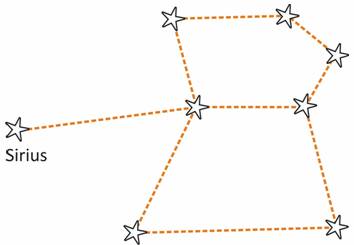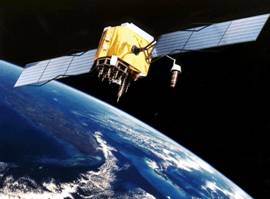Stars and the solar system Worksheet-13
(b) In how many days this satellite completes one revolution around the Earth?
(c) In how many days this satellite revolves around its own axis?
(b) How much time does the light from this star take to reach the Earth?
(c) Name the gas found in stars.
(b) How much time is required for light to reach the Earth from the sun ?
(c) Give the composition of the sun.
(d) What is the source of energy of the sun ?
(b) What is meant by rotation of Earth?
(c) What is the direction of rotation of Earth?
(d) How much time is required for rotation of Earth?
(e) How much time is required for one revolution of Earth?
Answer:

(b) The Moon takes 27(1/3) days to revolve around the Earth.
(c) The Moon takes 27(1/3) days to spin on its own axis.
(b) It's light takes 4.5 years to reach the Earth.
(c) Hydrogen gas is present in the star.
The waves travel in all directions and some of them reach the artificial satellites. The artificial satellites have special instruments which receive the signals transmitted by the Earth station. The signals so received are then amplified and retransmitted, by the instruments fit on the satellite Antennas fixed in a number of stations on Earth receive the signals transmitted from the satellite and finally reach the television at home.

(i) It is situated just at the right distance from the sun.
(ii) It has the correct temperature for living organisms.
(iii) Presence of water on earth,
(iv) Suitable atmosphere around the earth.
(v) It has a blanket of ozone.
(i) They are mainly gaseous.
(ii) Mass and size of the outer planets are very large.
(iii) They have a ring system around them.
(iv) They have a large number of moons.
(b) The light from the Sun reaches the Earth in 8 minutes and 20 seconds.
(c) The Sun consists of 70% hydrogen gas, 28% helium gas and 2% of heavier elements such as carbon, nitrogen, oxygen, etc.
(d) In the Sun nuclear fusion of hydrogen to helium, with the release of large amount of energy takes place.
(i) In an atom, the protons and neutrons are tightly packed in the nucleus and electrons revolve around it in fixed orbits.
(ii) In the solar system, the Sun is in the centre and the planets revolve around it in fixed orbits. (i) In an atom, the electrons can jump from one orbit to another
(ii) In the solar system, the planets remain in their orbits. They cannot change their orbits.
(b) The spinning of the Earth about its own axis is called rotation of the Earth.
(c) The earth spins from west to east.
(d) One complete rotation of the Earth takes 24 hours.
(e) One complete revolution of the Earth takes 3651/4 days.